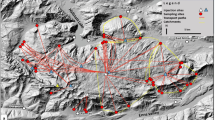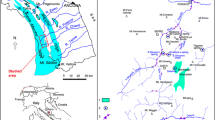Abstract.
Chlorinated solvents have been detected at low concentrations in some of the mineral and medicinal springs (spas) of Stuttgart since 1984. These springs discharge from a confined karst aquifer. In order to investigate both the properties of the aquifer and the mechanisms of contaminant transport, two multi-tracer tests were carried out in 1998 and 1999. Both fluorescent tracers (naphthionate, eosin, pyranine) and particle tracers (clubmoss spores, microspheres) were used. All available wells and springs were sampled for at least 12 months. In these experiments naphthionate produced the best results. Maximum flow velocities were established to be within the range of 53 and 230 m/day. The breakthrough curves demonstrated a heterogeneous aquifer. The results identified flow to the springs from the west and south-west. It was possible to prove an assumed boundary between the northern zone of low mineralised water and the southern zone of highly mineralised water.
Similar content being viewed by others
Author information
Authors and Affiliations
Additional information
Electronic Publication
Rights and permissions
About this article
Cite this article
Goldscheider, .N., Hötzl, .H., Käss, .W. et al. Combined tracer tests in the karst aquifer of the artesian mineral springs of Stuttgart, Germany. Env Geol 43, 922–929 (2003). https://doi.org/10.1007/s00254-002-0714-9
Received:
Accepted:
Issue Date:
DOI: https://doi.org/10.1007/s00254-002-0714-9




